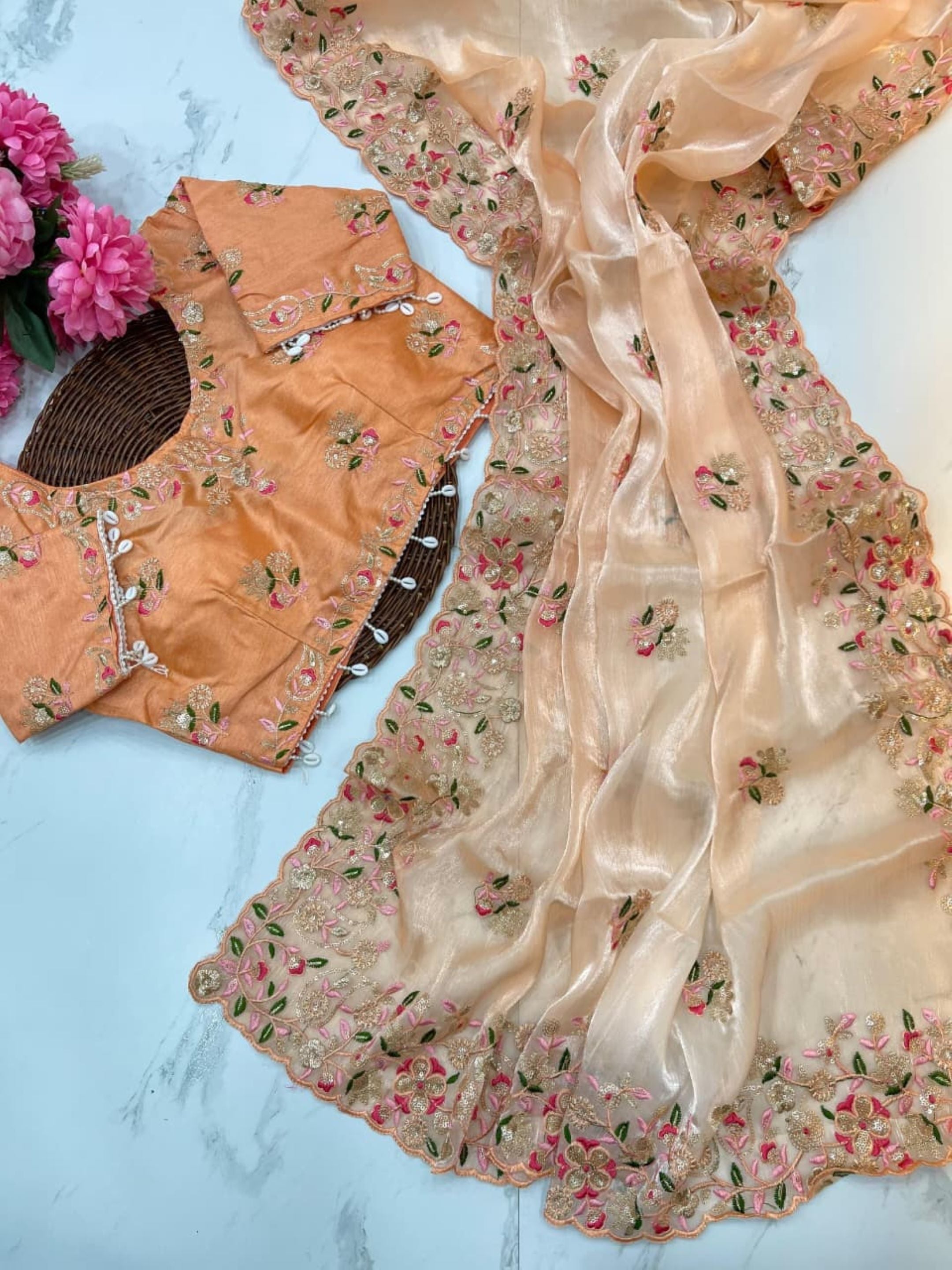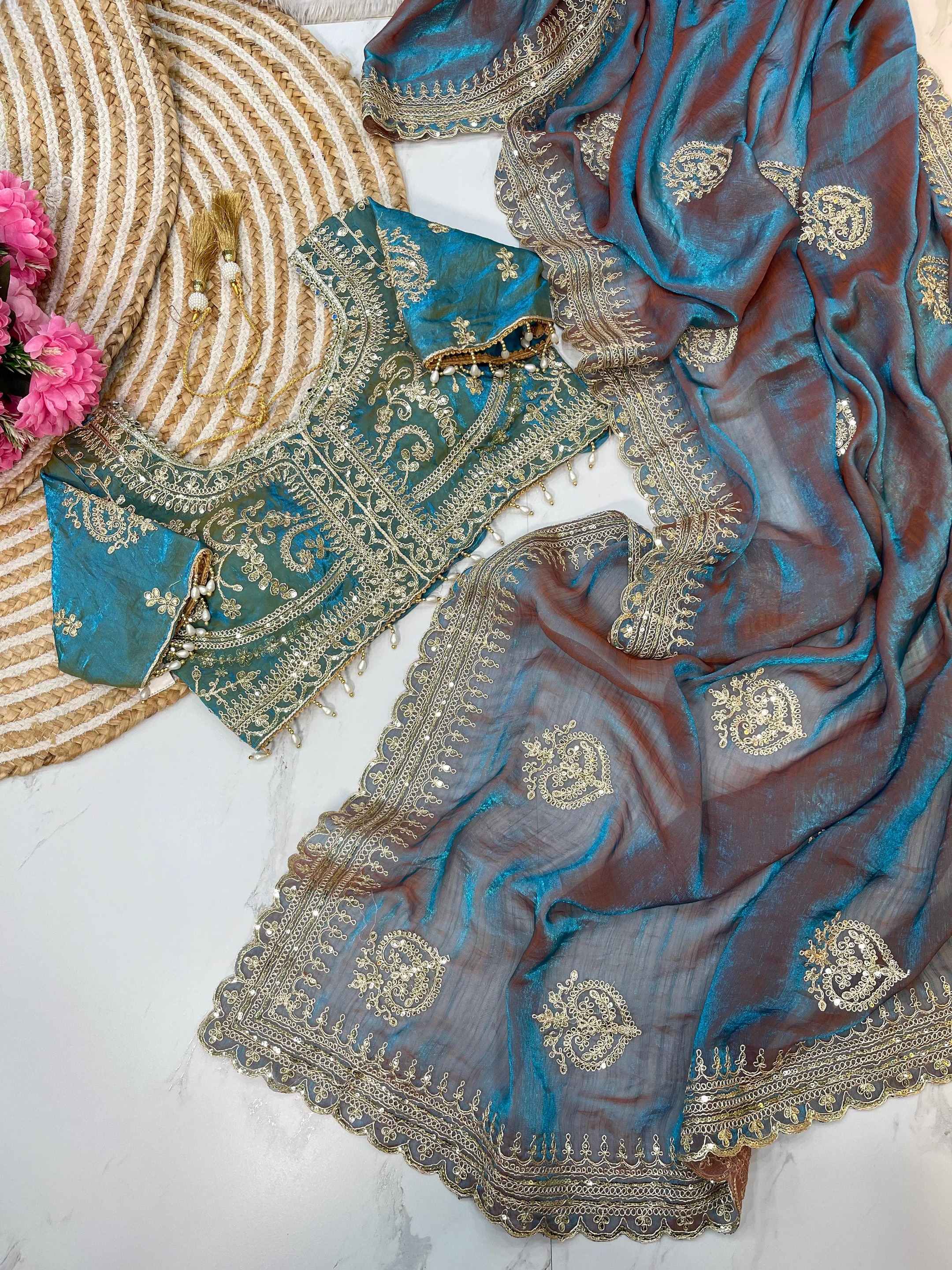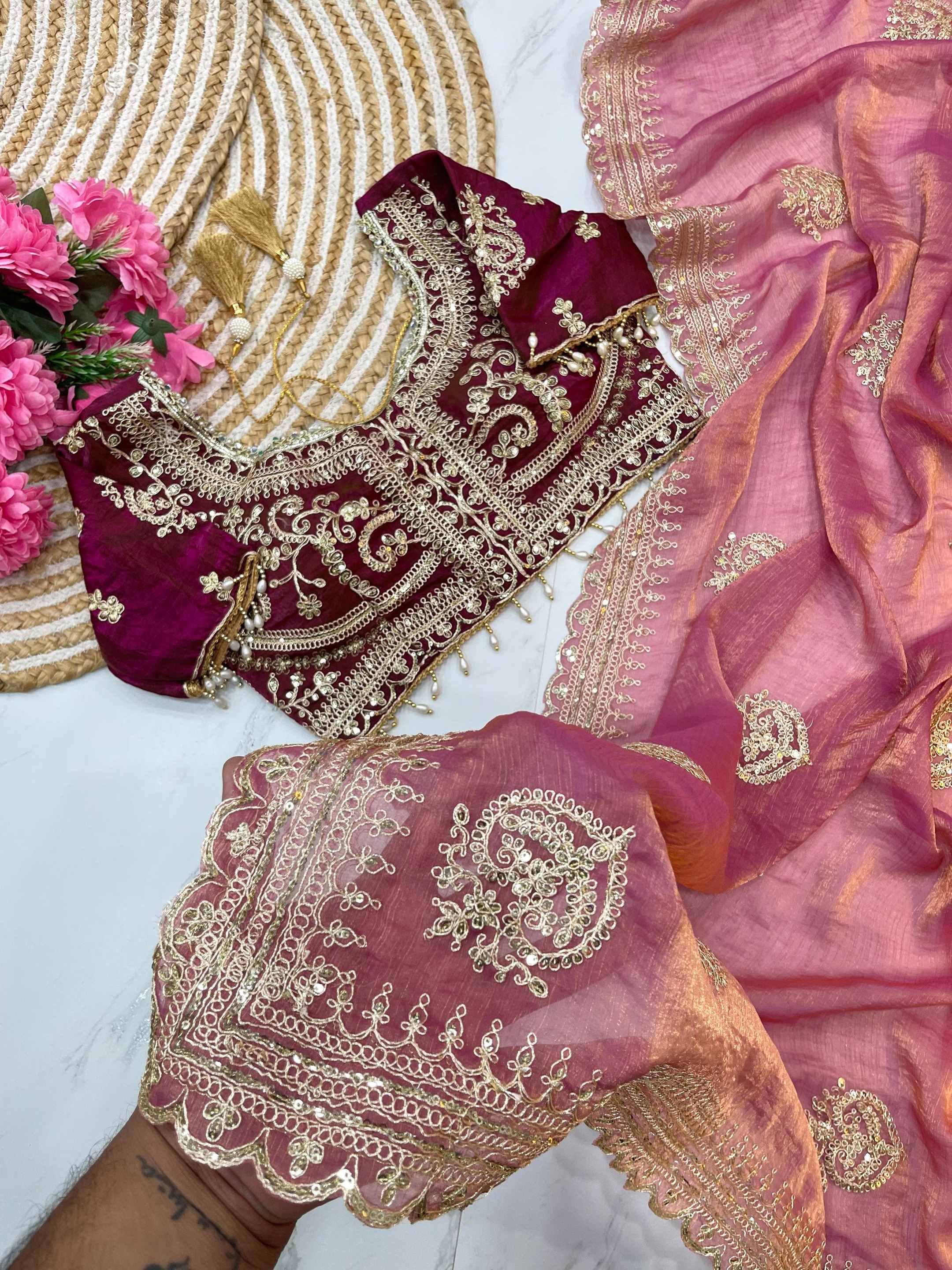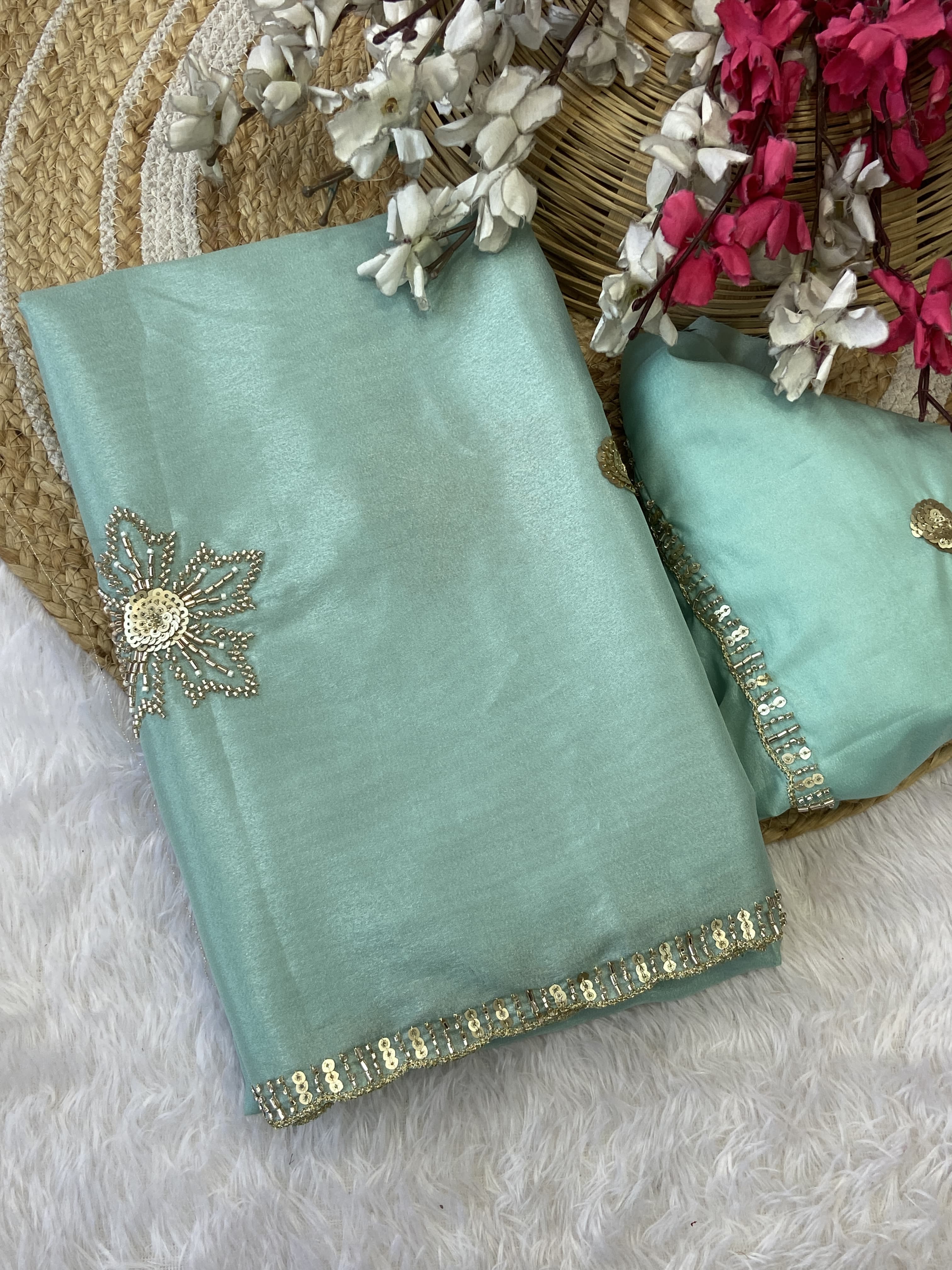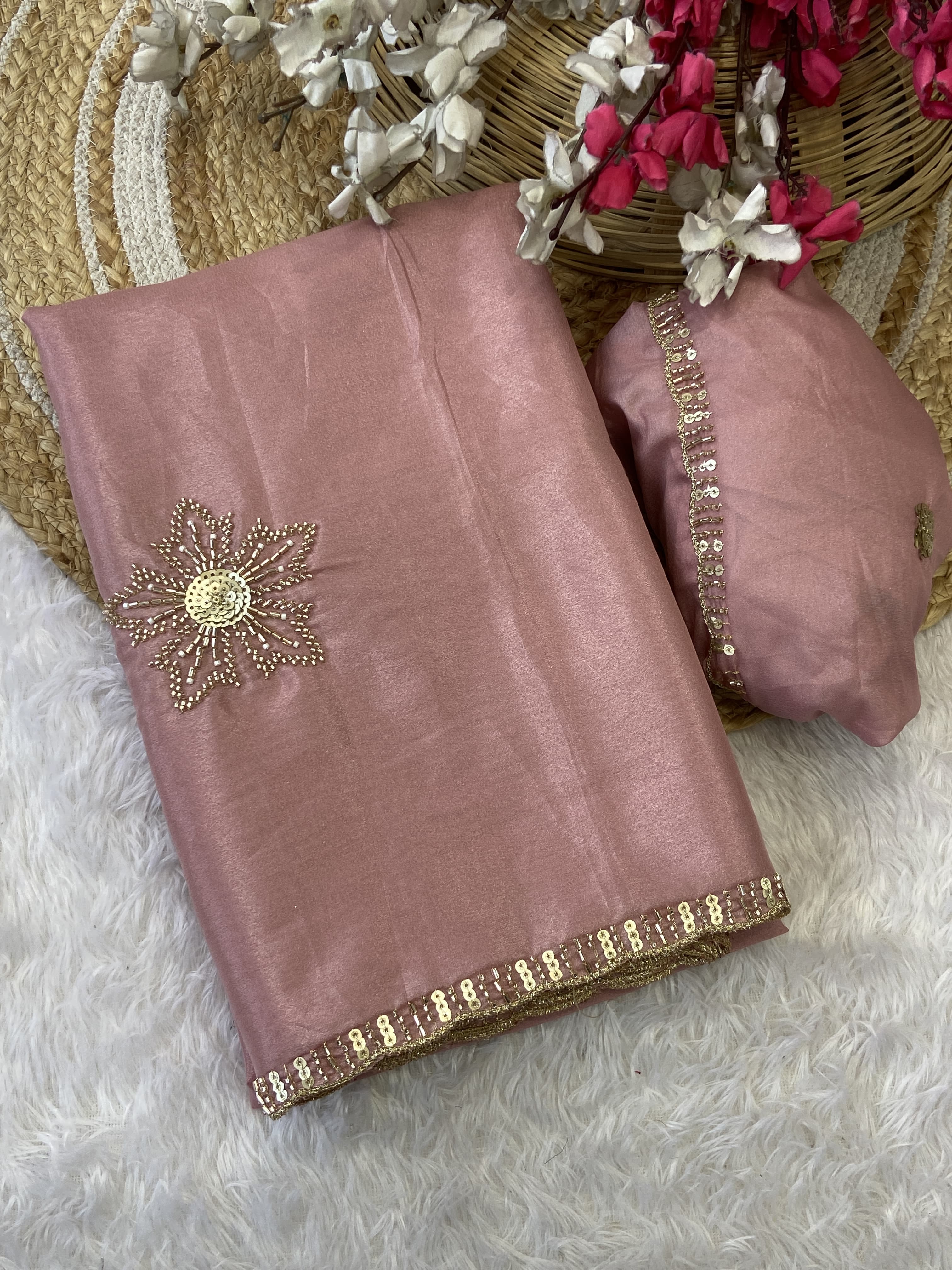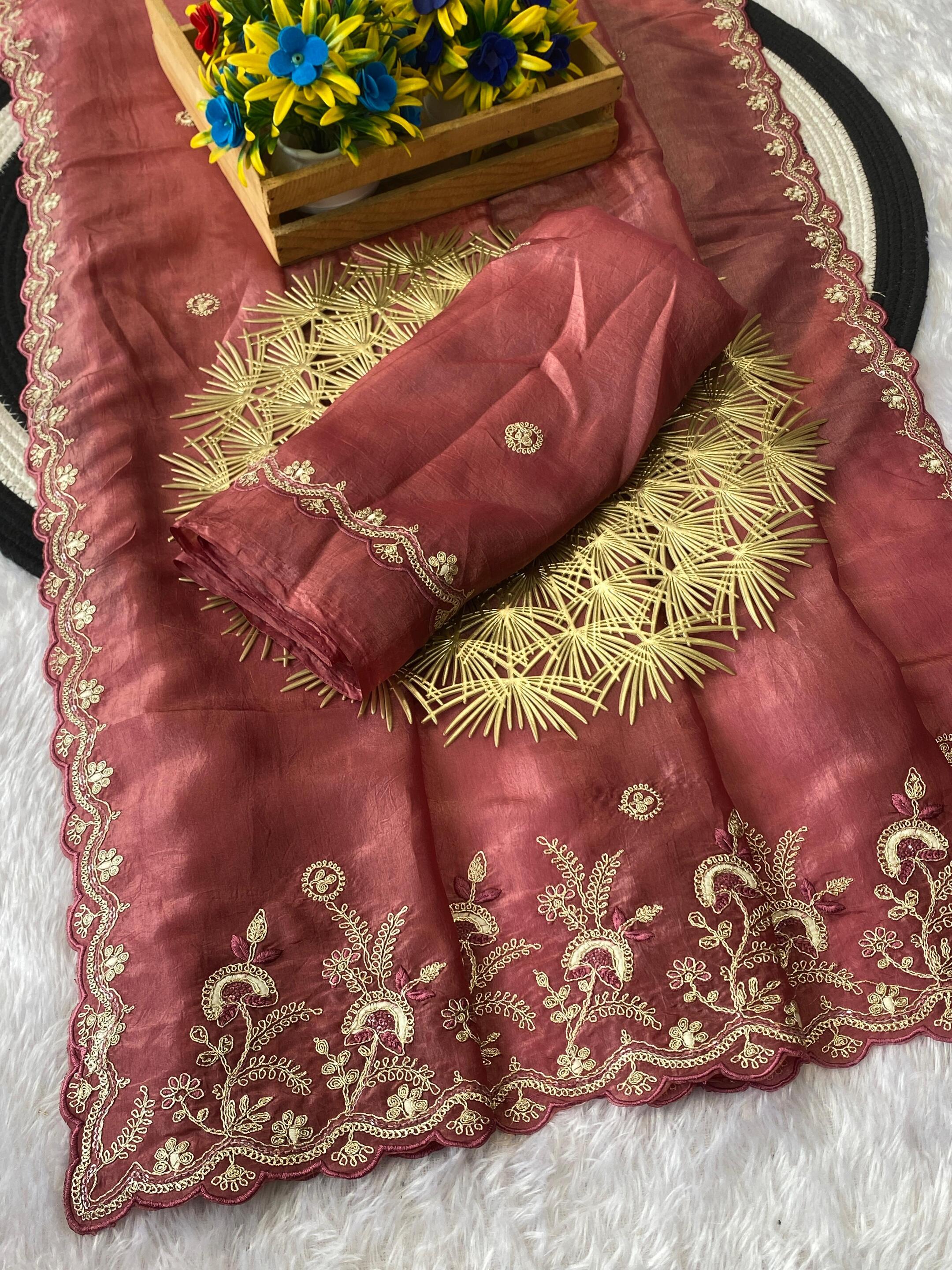
Discovering the 10 Types of Cotton Sarees

Sarees, the most beloved traditional apparel of India, have captivated women for generations with their grace and allure. Cotton sarees stand out among the many saree kinds because of how comfortable, breathable, and adaptable they are.
India's different cultures and geographical locations have resulted in the development of a wide variety of cotton sarees, each of which features distinctive weaving methods, elaborate patterns, and vivid colours. In this blog, we set out on an intriguing trip to learn about the wonderful world of cotton sarees, examining the various types of cotton sarees that tell tales of tradition and heritage via their weaving.
10 Types of Cotton Sarees Celebrating India's Artistic Heritage
1. Chanderi Sarees: Effervescence of Royalty
Chanderi sarees, named after the royal town of Chanderi in Madhya Pradesh, is a silk and cotton blend that creates a glossy yet lightweight fabric. Chanderi sarees are known for their sheer texture and often have finely woven designs of gold or silver zari that convey a regal beauty. These sarees are popular among women who want to seem smart and sophisticated for special occasions.
Chanderi has a long history of weaving dating back to the Vedic period. The expert weavers of Chanderi take immense pride in their work, and their sarees have long been patronised by royalty and nobility. Chanderi sarees continue to attract fashion lovers and are an important feature of festive and ceremonial attire today.
2. Banarasi Cotton Sarees: Where Opulence Meets Comfort
Varanasi, a prestigious city in Uttar Pradesh, is well known for its lavish Banarasi sarees, which are mostly composed of silk. Nevertheless, Banarasi cotton sarees have also won a devoted following for their smooth texture and elaborate designs inspired by the city's rich tradition. The saree has an extravagant feel thanks to the silk and cotton combination, making it a wonderful option for both formal occasions and social events.
The origins of the famed Banarasi saree can be found in the Mughal era. The opulence of Banarasi sarees is enhanced by the use of gold and silver zari, and the elaborate patterns frequently incorporate flower patterns, paisleys, and other conventional motifs.
3. Tant Sarees: Bengal's Finest Weave
Tant sarees, which originate from the state of West Bengal, are the epitome of conventional Bengali culture. These sarees are handwoven from delicate cotton strands and are exceedingly light and airy, making them perfect for hot, muggy weather. Tant sarees frequently have brilliant colors, lovely designs, and a wide border that lend beauty to any event.
Tant sarees are evidence of Bengal's master weavers' skill, who have been perfecting their trade for decades. Tant sarees are a popular choice for both festive occasions like Durga Puja and Bengali weddings due to their distinctive handwoven designs and light texture.
4. Kota Doria Sarees: Threads of Elegance
Emanating from the Kota district of Rajasthan, Kota Doria sarees are widely recognized for their exclusive square-check patterns. Kota Doria sarees, which are from the Rajasthani district of Kota, are distinguished by their distinctive square-check designs.
These sarees are crafted out of a cotton and silk blend, making them a subtle and breathable option for summer wear. Kota Doria sarees are a popular choice for formal events and daytime activities because of their fine weave, which grants them a transparent and somewhat weightless look.
According to legend, Maharaja Rao Kishore Singh of Kota introduced the craft of weaving Kota Doria sarees in India. While the exquisite zari work on the border and pallu provides a sense of refinement that suits formal occasions, the airy and sheer nature of these sarees makes them an ideal choice during the sweltering summers.
Also Read:- Different Types of Banarasi sarees
5. Jamdani Sarees: Artistry in Threads
Jamdani sarees, the pinnacle of artistic brilliance, are a labor of love for expert weavers from Bangladesh and some regions of India. These beautiful floral and geometric motifs on the hand-woven sarees were expertly crafted utilizing cotton threads. For individuals who value exceptional craftsmanship, Jamdani sarees are a sought-after possession due to their light weight and sheer texture.
UNESCO has designated Jamdani weaving as a component of the Intangible Cultural Heritage of Humanity. These intricately patterned works of art take the weavers months to complete; they often depict mythological tales or exhibit portrayals from nature. A Jamdani saree is like wearing a work of art since each individual thread tells a unique story of handmade mastery.
6. Maheshwari Sarees: The Charisma of Madhya Pradesh
Named after the Maheshwar town in Madhya Pradesh, the subtle yet striking patterns of Maheshwari sarees sets them apart. These sarees, which are made of a cotton and silk mixture, have a variety of vivid hues and beautiful pallus embellished with stripes, checks, and floral motifs. Maheshwari sarees seamlessly combine traditional and modern aspects, making them appropriate for both formal occasions and casual events.
Maheshwari sarees have a long history that dates back to the 18th century, when Indore's Queen Ahilyabai Holkar supported its weaving. The regal patterns and vivid colors of Maheshwari sarees, which have come to represent artistic refinement from Madhya Pradesh, are still evidence of the royal influence.
7. Assam Silk Cotton Sarees: Assamese Elegance
Northeastern Indian state of Assam is renowned for the stunning silk cotton sarees and verdant landscape. These sarees have a silk and cotton blend for a smooth texture and distinctive lustre. These sarees represent the cultural diversity of Assam because they are decorated with traditional Assamese patterns like the local flora and fauna.
Sarees made of silk and cotton from Assam capture the splendour of the state's landscape. The art of making these sarees has been passed down through the generations and is engrained in Assamese culture. Not only among residents of the state, but also throughout the nation and abroad, Assam silk cotton sarees are admired for their beauty and elegance.
8. Mangalagiri Cotton Sarees: Graceful Drapes from Andhra Pradesh
The magnificent handwoven cotton sarees known as Mangalagiri come from the Andhra Pradesh town of Mangalagiri. The zari border, which gives a touch of grandeur to the otherwise plain but attractive drape, is what makes these sarees special. These sarees are preferred for both everyday wear and special occasions due to their popularity and durability.
The Vijayanagara kings first became aware of Mangalagiri sarees in the 16th century and began to patronize them. The robust weave of the sarees is what lends them their endurance and enduring attractiveness. Mangalagiri sarees are a charming addition to any woman's wardrobe because of the zari borders, which give them a sense of refinement.
9. Sambalpuri Sarees: Orissa's Finest Heritage
The rich cultural legacy and historic artistry of the state of Odisha are reflected in the Sambalpuri sarees made there. These sarees, which were woven with the traditional ikat technique, feature striking hues and sophisticated geometric designs. Sambalpuri sarees have received a GI tag as a result of the meticulous craftsmanship required to make them, indicating their uniqueness and cultural prominence.
Sambalpuri sarees use the ikat technique, which includes tying and dying the threads before weaving, to create breathtaking patterns that look as though they were painted on the fabric. Each saree is a work of love, and the themes frequently feature traditional icons, mythical beings, and natural elements that have been handed down through the generations.
10. Kalamkari Cotton Sarees: An Artistic Affair
Due to their captivating hand-painted or block-printed designs and mythical narratives, kalamkari sarees are a canvas of artistic excellence. The elaborate motifs and use of natural colors that go into manufacturing Kalamkari sarees, which are originally from Andhra Pradesh and some of Telangana, make each one a work of art.
"Kalamkari" is a combination of the words "kalam," which means pen, and "kari," which means effort. The sophisticated designs are delicately drawn on the sarees using a pen-like tool, and frequently, images from epics like the Ramayana and Mahabharata are displayed. A Kalamkari cotton saree is a work of art that honours the vibrant cultural heritage of India.
Wrapping Up.
Each variation of cotton sarees in India weaves its own story of culture, history, and workmanship. It's an enchanted world. Each drape displays the extraordinary talent of Indian weavers and the diversity of this old clothing, from the regal attraction of Chanderi sarees to the artistic fascination of Kalamkari sarees.
The traditional craftsmanship and creativity of cotton sarees flourish as long as women continue to appreciate their beauty, leaving a timeless legacy that captures the heart and soul of every saree enthusiast. Accept the fascination of these diverse types of cotton sarees and allow their inexplicable threads to enfold you in the glorious voyage of elegance and tradition.
.


